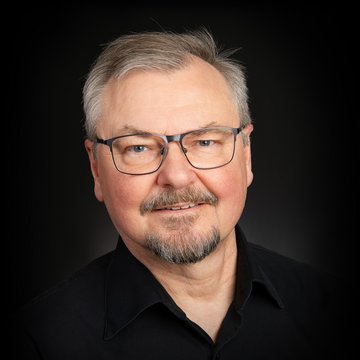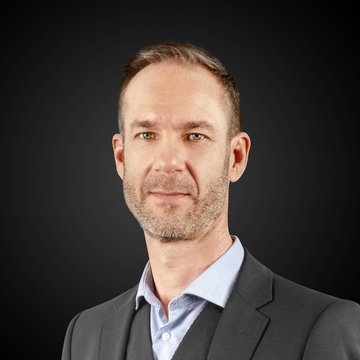Eye Surgery Using Excimer and Femtosecond Lasers
For the majority of people, vision is natural. Many consider the eye the most important sensory organ. If it does not function the way it should, we find it extremely limiting: it is necessary to find a remedy. The options are phenomenal, and intelligent technologies achieve – to some extent – the unimaginable. It seems almost “normal” to undergo laser eye surgery to eliminate the need to wear glasses. In fact, so-called laser in situ keratomileusis (LASIK) surgery was introduced more than 20 years ago. Excimer lasers have been used since then in operations to correct defective vision.
Image Formation in the Eyes
Beyond Borders
Christopher Scheiner (1575-1650) was the first person to explain the correct accommodation ability of the human eye [1] and prove image formation on the backside of the eyeball. This knowledge is the foundation of operative repair of defective vision.
Defined simply: The eye’s imaging system consists of the cornea and a lens system composed of the anterior chamber, eye lens, and vitreous body. The corneal system has a larger refractive effect than the lens system [2]. The lens is shapeable in its entirety via the ring muscle. This allows near and far objects to be imaged sharply on the reti-na – a characteristic that deteriorates with increasing age. For better comprehension, the eye can be displayed as a thin positive lens [3].
Defective Vision
Beyond Borders
The most common forms of defective vision that can be corrected with laser surgery include corneal curvature, myo-pia, and hyperopia. The latter two forms are based on a non-ideal formation of the eyeball, which means that distant objects are imaged before or after the retina.
In nearsightedness, the axial direction of the eye is too long; the focal point of distant objects is in front of the retina. Myopic patients can see well at short distances.
In farsighted patients, the retina is too far forward; however, the ciliary muscle can compensate this defect – in part even up to 2.5 dpt [4].
Laser Method
Beyond Borders
In ophthalmology, lasers are used to burn, cut, or remove objects. The goal of treatment in refractive surgery is the ablation of the eye cornea in order to achieve optimal refractive power. Many different methods are available on the market that work with femtosecond lasers and/or excimer lasers. The femto-LASIK method, which was first approved in the U.S.A. in 2001, is particularly popular [5].
Femto LASIK Method
Two different laser technologies are applied consecutively in this method of treatment. A femtosecond laser cuts the outer layer of the cornea, which is opened up as a flap for subsequent treatment.
The excimer laser is then used to correct defective vision in one of the deeper layers of the cornea. The open flap is then closed to allow the wound to self-seal in a final step and reattach in a matter of a few hours [2].
Know-how
Beyond Borders
The excimer laser vaporizes the corneal tissue to be removed via photoablation. Myopia up to -10 dpt can be treated by vaporizing a round piece of tissue in the center of the cornea. To correct hyperopia up to approximately +3 dpt, the curvature of the central cornea is intensified and the refractive power of the cornea increased by ablating the edge of the cornea [6].
Quick ablation is advantageous. In high-end systems, the 193 nm excimer lasers achieve repetition rates of 1050 Hz: thus, the duration of ablation decreases to 1.3 seconds per diopter [7]. The eye can move even in this short period of time; thus, the quality of eye tracking during treatment can have a significant effect on the outcome. We will introduce this system from the technology leader on the following pages.
Sources
Beyond Borders
[1] August Heller, die Geschichte der Physik von Astistoteles bis auf die neuste Zeit, Bd. 1, S. 342, Nachdruck der Originalausgabe, Stuttgart 1882
[2] Prof. Dr. med. Thomas Kohnen, Deutsches Ärzteblatt, 29. Feb. 2008
[3] Pedrotti, Pedrotti, Bausch, Schmidt, Optik - Eine Einführung, Prentice Hall, 1996
[4] www.auge-online.de/Therapie/Operation_von_Sehfehlern/operation_von_sehfehlern.html
[5] www.augen-lasern-vergleich.de/ratgeber/methoden/augenlaser-methoden/femto-lasik/
[6] cms.augeninfo.de/hauptmenu/augenheilkunde/sehen-ohne-brille-refraktive-chirurgie/laserverfahren/lasik.html, Okt. 2016
[7] Performance, die bewegt, Die SCHWIND AMARIS® Produktfamilie, Schwind eye-tech-solutions, 2013
LASER COMPONENTS Nordic - Your competent partner for optical and optoelectronic components in Sweden, Norway, Finland, Denmark, and Iceland.
Welcome to LASER COMPONENTS Nordic AB, your expert for photonics components. Each product in our wide range of detectors, laser diodes, laser modules, optics, fiber optics, and more is worth every Crown (SEK). Our customized solutions cover all conceivable areas of application: from sensor technology to medical technology. You can reach us here:
Box 14001 / Skårs led 3
SE-400 20 Göteborg
Sweden
Phone: +46 (0)31 703 7173
Email: info(at)

